The Artist’s Brushstroke | Online Summer Presentation
Galleri Nicolai Wallner is please to present our Online Summer Presentation, The Artist’s Brushstroke, with works by Cornelia Baltes, Jonathan Monk, Jose Dávila and Poul Gernes. In this online presentation, we explore works that play with the idea of the artist’s brushstroke, and what it means to visibly demonstrate the presence of the artist in an artwork.
With Jonathan Monk’s work Andy Warhol’s Chairman Mao Hand Made in The People’s Republic of China, for example, this is explored through ideas of authorship and appropriation. Monk cleverly twists Warhol’s practice, as an exact replica of Warhol’s iconic silkscreen has been produced in a Chinese factory, hand painted to match the original.
While questions of authorship were not directly relevant to his practice, throughout his career Poul Gernes (1925 – 1996) painted systematically as to removing himself from his work. He understood art as to be directly linked to the viewer, and as such the artist need not show himself. He believed this was possible by painting geometric shapes such as stripes and dots, allowing the work to be experienced as is. This practice was so successful, that Gernes’ way of removing himself has become iconic and recognisable.
Inversely, for Cornelia Baltes, the painterly gesture is a tool to instil in us the feeling of spontaneity and movement, as if we’ve been caught in the middle of a moment of intensity. Each brushstroke feels deliberate, and has in fact been planned and executed with the idea of provoking such feelings within us.
In Jose Dávila’s work, the brushstroke acts as a catapult, opening up new ideas. His work Untitled (Yellow brushstroke II) takes on a 1965 Roy Lichtenstein work of the same name. In Dávila’s versions, the yellow of the brushstroke has been cut out. This act can be interpreted as the continuation of a shift in the balance of power—just as Lichtenstein’s act of printing the brushstroke challenged the ideals of abstract expressionism. Similarly, Dávila’s sculpture Untitled (Calacatta IV) uses a ratchet strap to not only hold a leaning slab of marble in balance, but to playfully nod to modern art’s exploration of colour, composition and stripes, notably to the paintings of Barnett Newman.
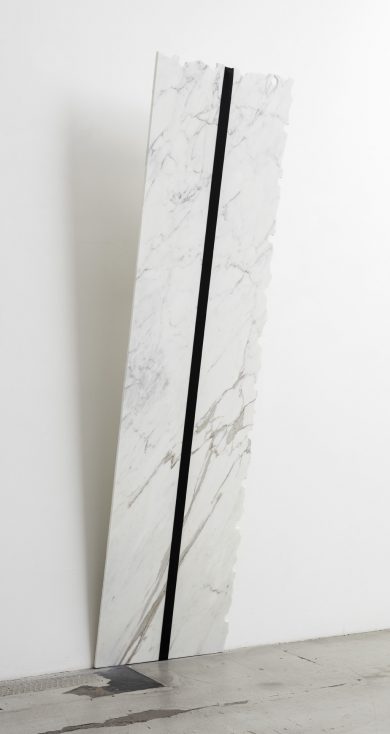
Jose Dávila
Untitled (Calacatta IV) (2015)
Calacatta marble, eye bolt and ratchet strap
270 x 71 x 45 cm | 106.3 x 28 x 17.75 in
An imposing slab of marble balances precariously in the join between the wall and the floor. Leaning in to the room, it is suspended from the wall by a singular ratchet strap that runs across the marble, which becomes a line extending along the surface capable of balancing the sustained weight. This tension creates a sense of perpetual movement in the work, almost as if we are waiting to see if it will stand or fall.
The strip of colour that runs across the marble serves not only as a reminder of the fragility and the precariousness of the work’s placement, but also the delicacy in which the work is constructed conceptually and aesthetically.
The hard line of the ratchet strap combined with the nuances in the calacatta marble mimic that of the classic era of minimalist and colourfield painting.
Appearing as drawn gestures of the stability of the structure, the strips can be perceived as strokes, recalling Barnett Newman’s paintings and Kandinsky’s description of the line as an invisible entity.
As dictated by its title Jonathan Monk’s painting Andy Warhol’s Chairman Mao Hand Made in The Peoples Republic of China is based on an appropriation. Jonathan Monk has had a Mao portrait by Andy Warhol remade by anonymous Chinese artists from a studio that specializes in commissioned copies of famous works. The work has been remade not as a silkscreen (as the original) but as a hand painted copy pointing towards another understanding of originality and authenticity. Monk rethinks the inherent serialization of POP art as well as offers a comment on the global (art) world of today.
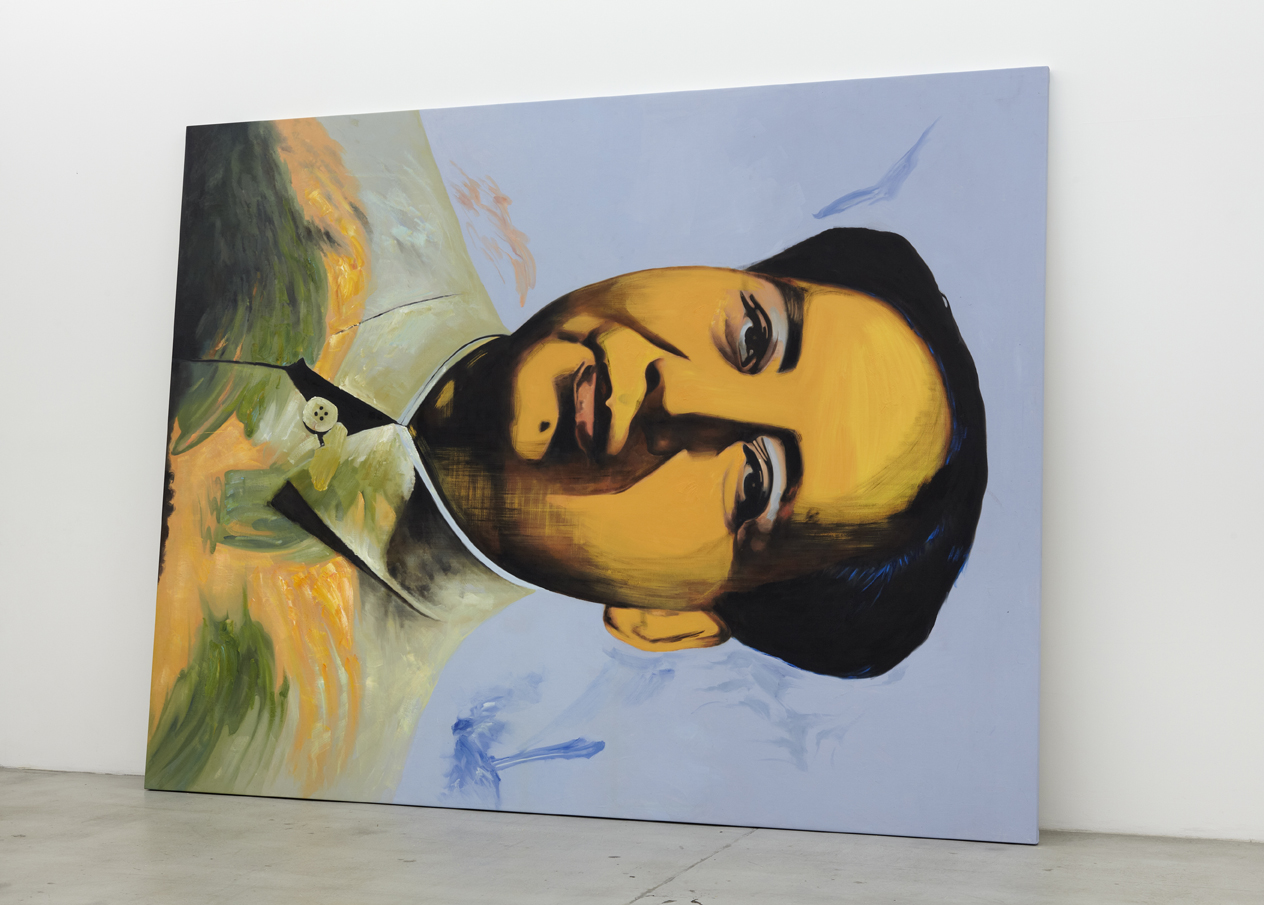
Jonathan Monk
Andy Warhol’s Chairman Mao Hand Made in The Peoples Republic of China (Large) (2010)
Oil on canvas
250 x 326 cm | 98.5 x 128.3 in
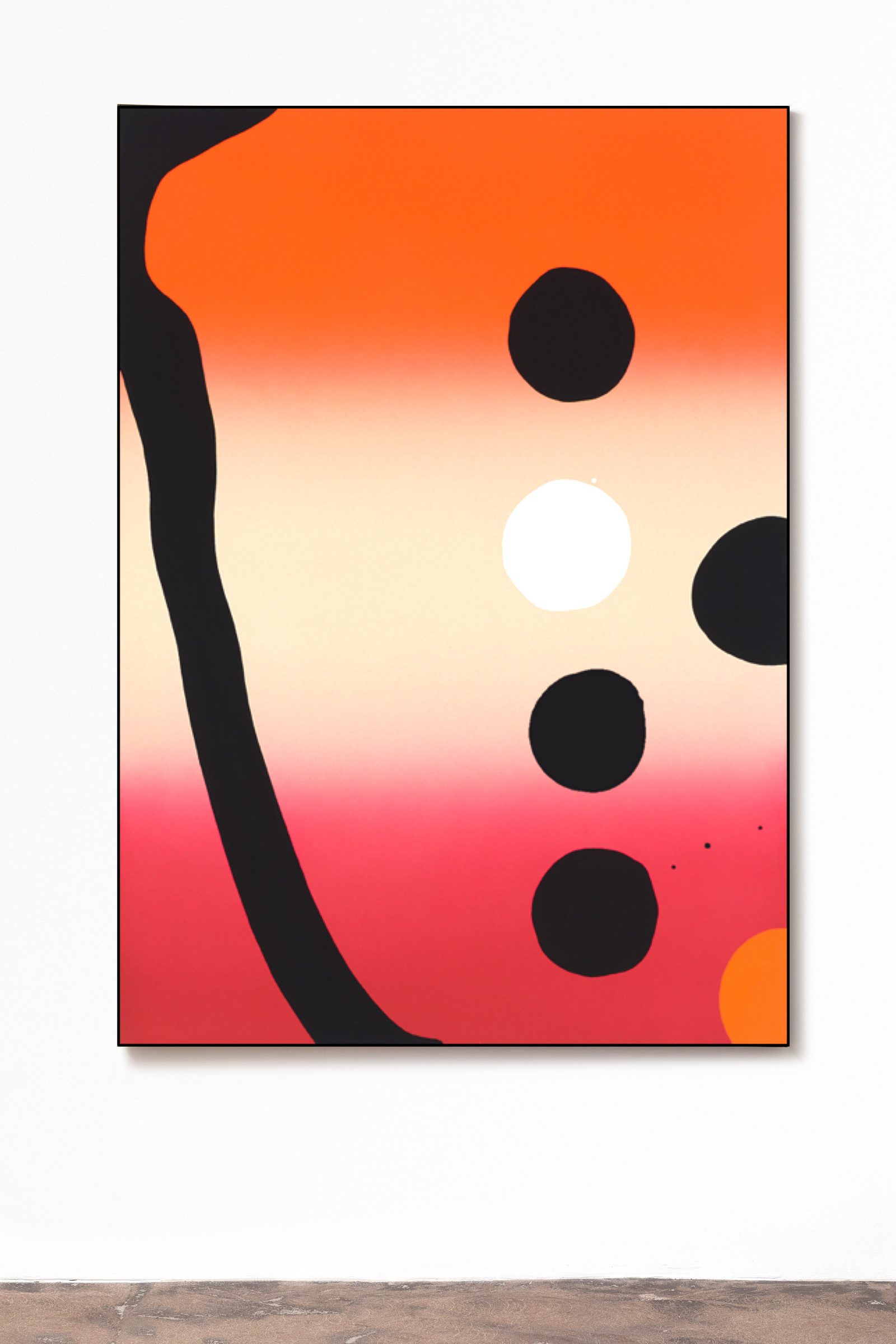 Cornelia Baltes
Cornelia Baltes
Semm (2019)
Acrylic on canvas
140 x 100 cm | 55 x 39.3 in
Cornelia Baltes is known for her paintings and installations that stand on the edge of abstraction and figuration, shifting in turn from one to the other. Corporeal elements such as hands and feet, part of a face, often captured in motion, are combined with bold lines creating shapes and more gestural forms that come together to give us a hint of a narrative without revealing it to us in full. In capturing these moments that seem charged with an intensity and a dynamicism, Cornelia Baltes invites us in to a world where spontaneity and playfulness give way to subtle details.
Her precise technique and the use of highly pigmented black paint adds depth and contrasts her intense colour palate which ebbs and flows, contributing to this inherent lightness to the work while at the same time creating the feeling that it was done in the spur of the moment. This provoked sense of urgency and energy that the works instil in the viewer reveals an intentionality.
Each of Baltes brushstrokes feels deliberate, determined in their action while at the same time remaining open in their interpretation, revealing more to us with each turn. Working with a lexicon of imagery that has the power to play with our memories, her work draws on our subjective experiences, morphing for each of us into a different narrative, into something personal and almost intimate while at the same time being open and universal in their ability to do so.
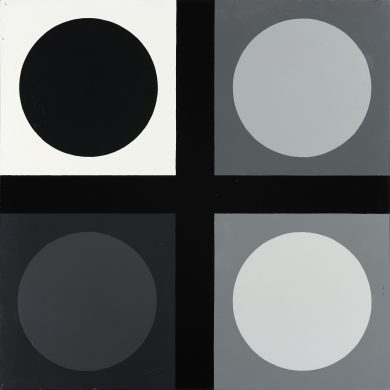 Poul Gernes
Poul Gernes
Untitled (tic tac toe painting) (1966 – 1967)
Enamel paint on masonite
122 x 122 cm | 48 x 48 in
The series Untitled (tic tac toe painting) is based on the universally played game of tic tac toe, which is simple in its rules yet mathematically challenging. The first one to place their marks (noughts or crosses) in a horizontal, vertical, or diagonal row wins the game. In Gernes’ version the image is simplified, only leaving one cross in the middle, and four noughts or circles surrounding it. The choice of colour varies in each of the works in the series.
This systematic way of painting was for Gernes a way of removing any signs of himself, or rather of the artist’s “hand” within the work. This meant that Gernes as the artist was no longer a kind of middle man who was needed to understand the work. The experience was between the work and the viewer alone, and in this sense was direct and accessible to everyone.
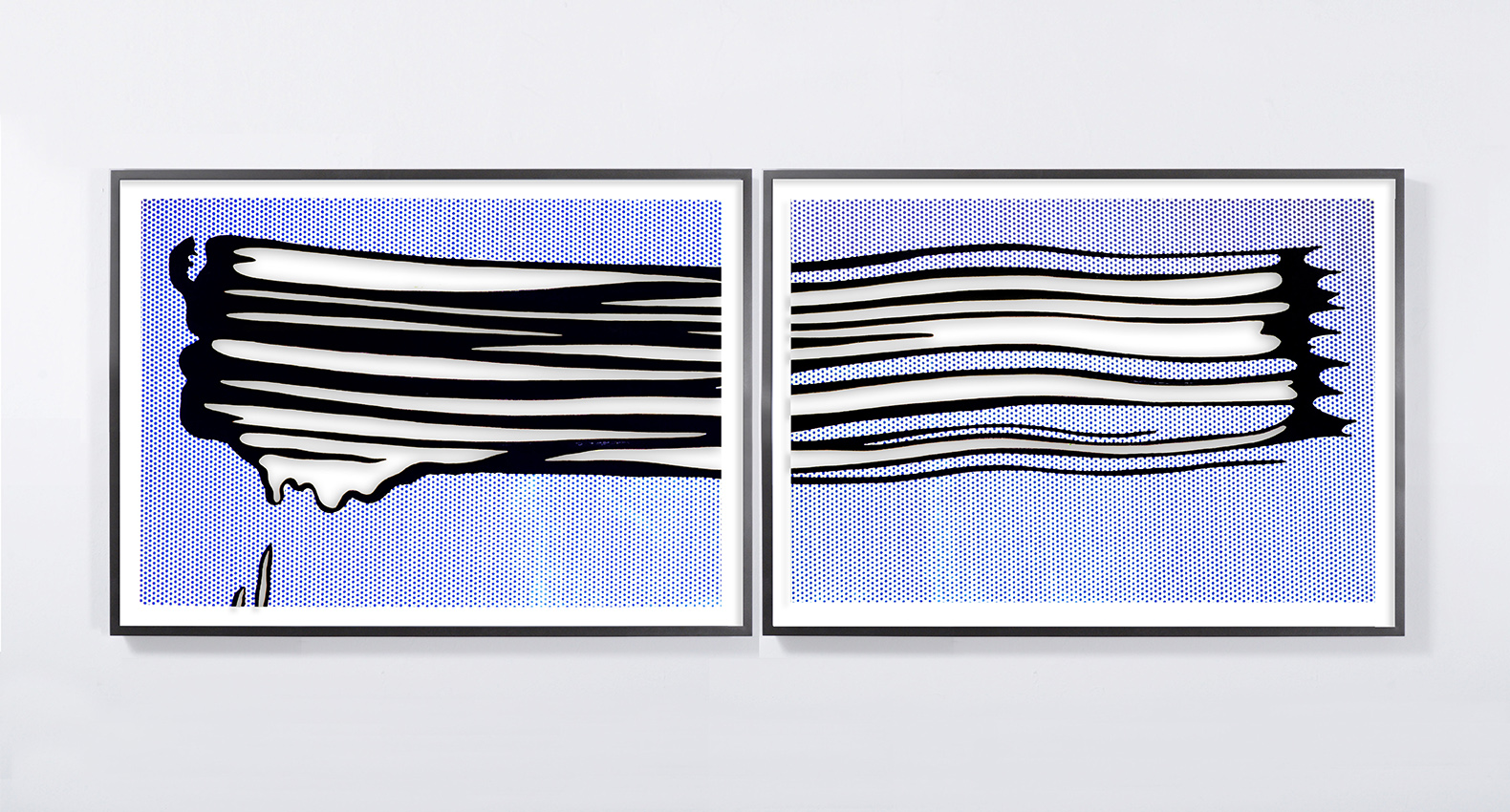
Jose Dávila
Untitled (Yellow Brushstroke II) (2017)
Archival pigment print, cutout
104 x 302.6 cm | 41 x 119.25 in
Edition of 4 (+1 AP)
With “Untitled (Yellow Brushstroke II” Jose Dávila takes on the classic 1965 work by Lichtenstein of the same name. The central figure of the work—the brushstroke—has been cut out, leaving its surroundings intact. In a nod to the subjective nature of how we view and perceive art, the idea of cutting out transfers the role of creation back on to the spectator. In asking them to imagine how they see the “complete” work, they become part of the process, acknowledging their own role not only with this work, but with art in general.